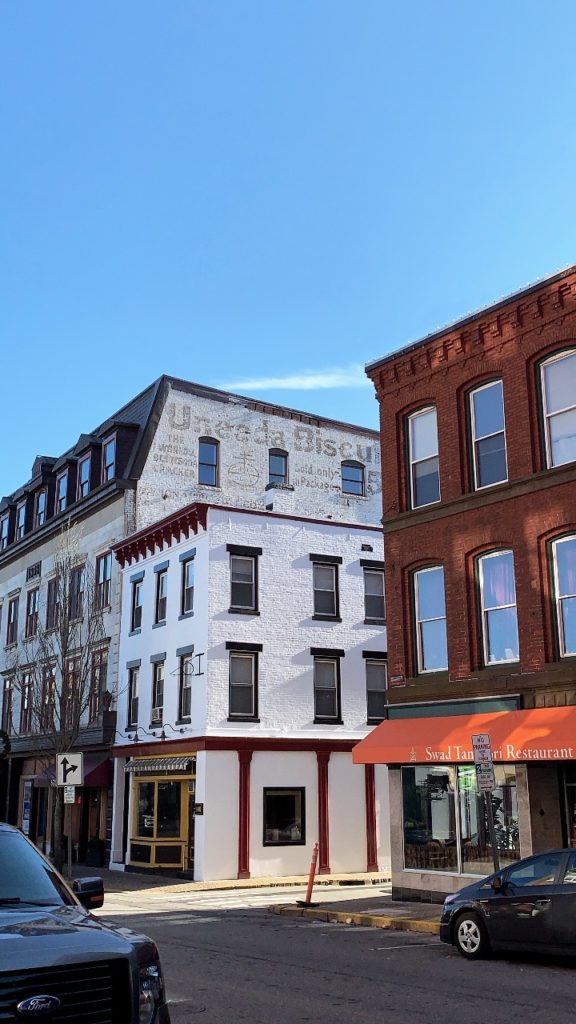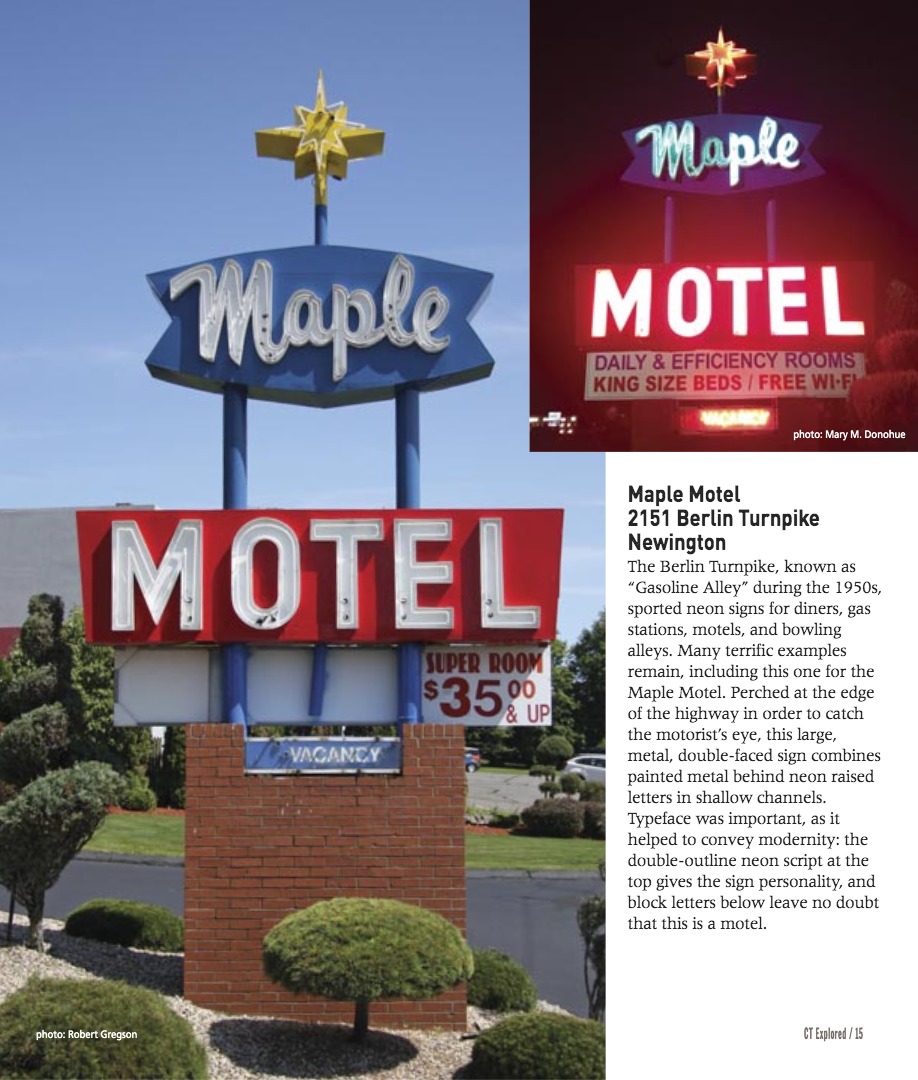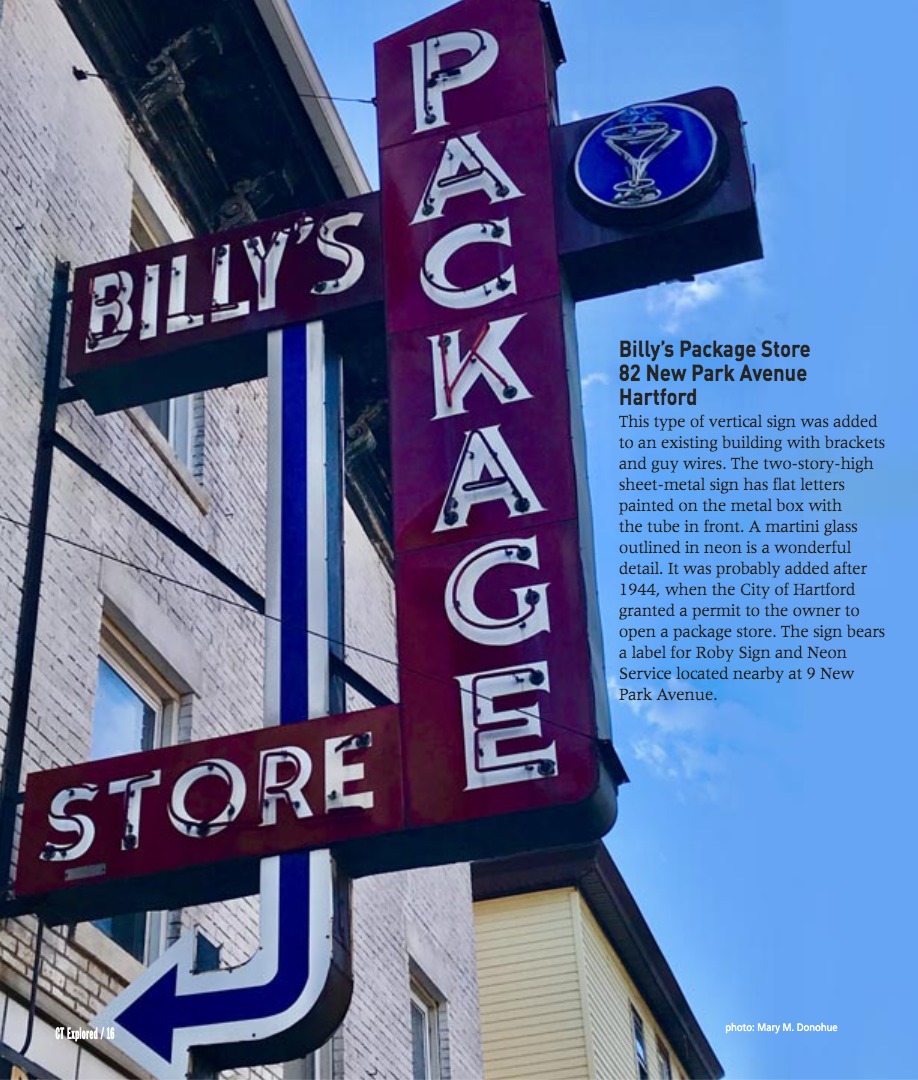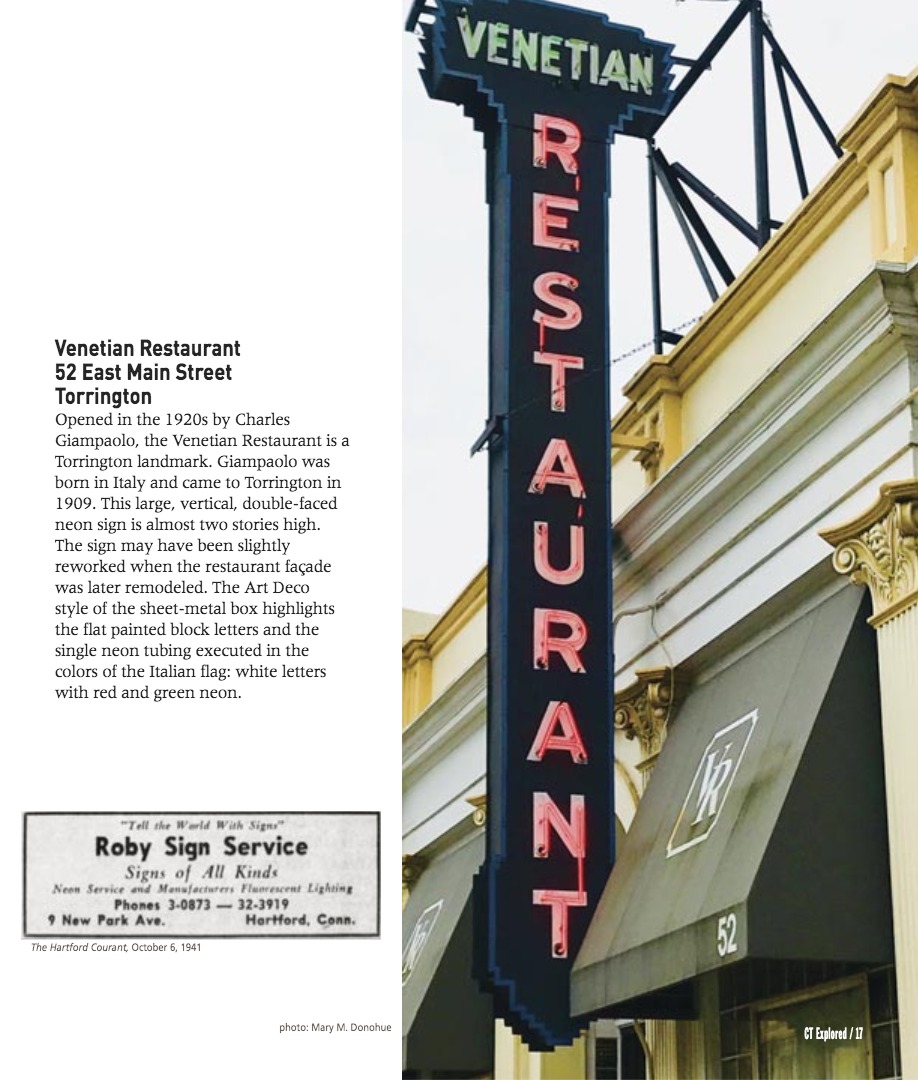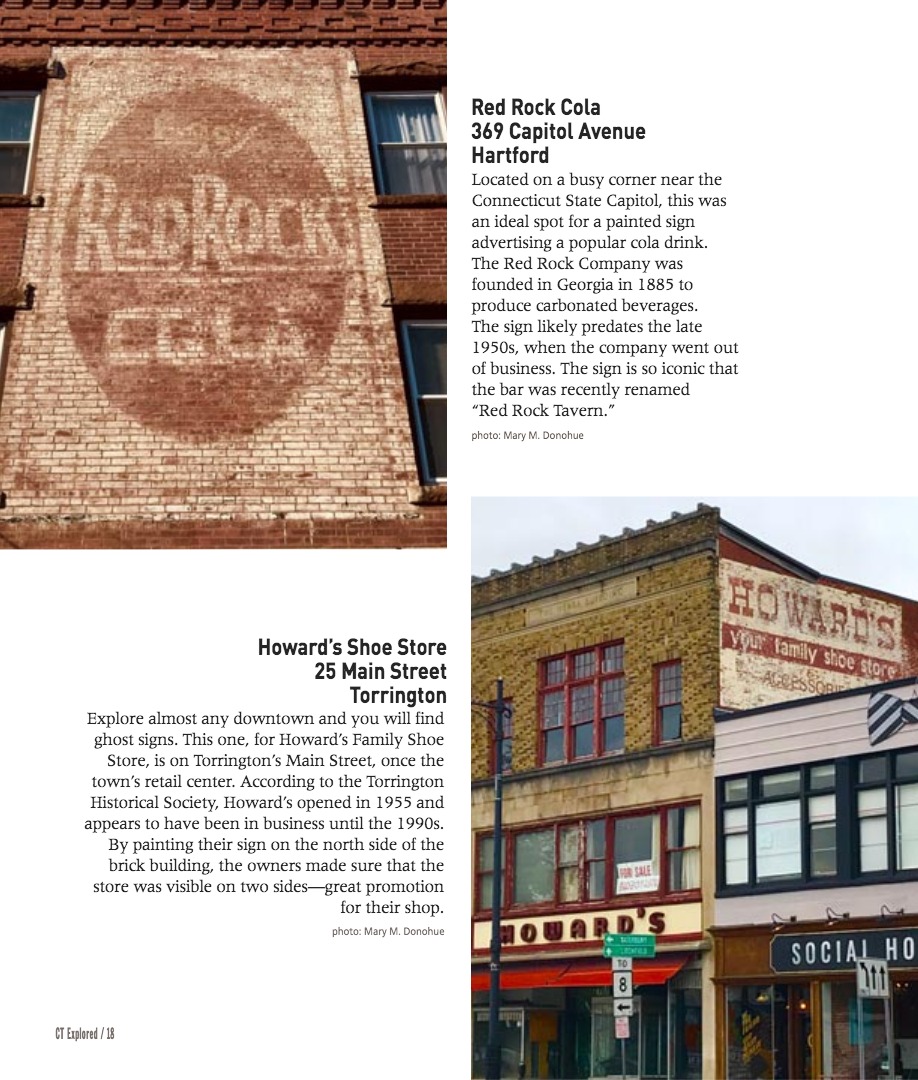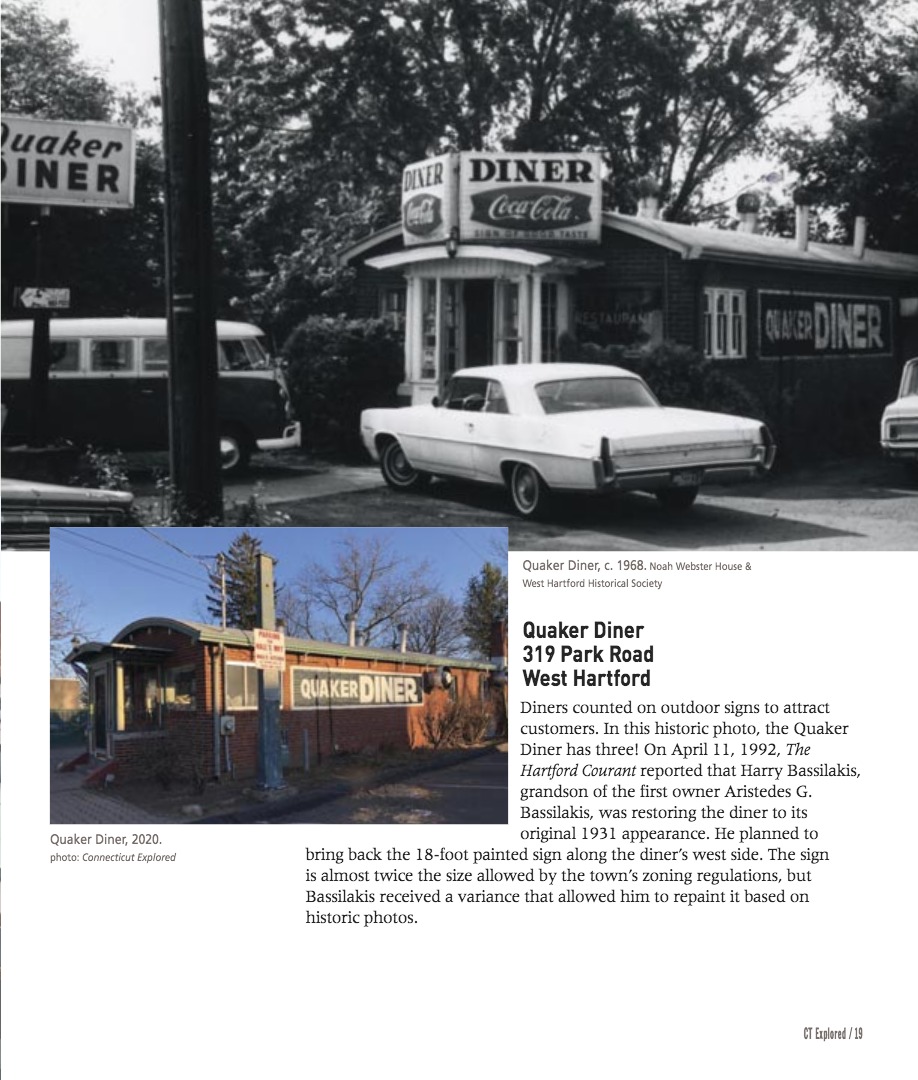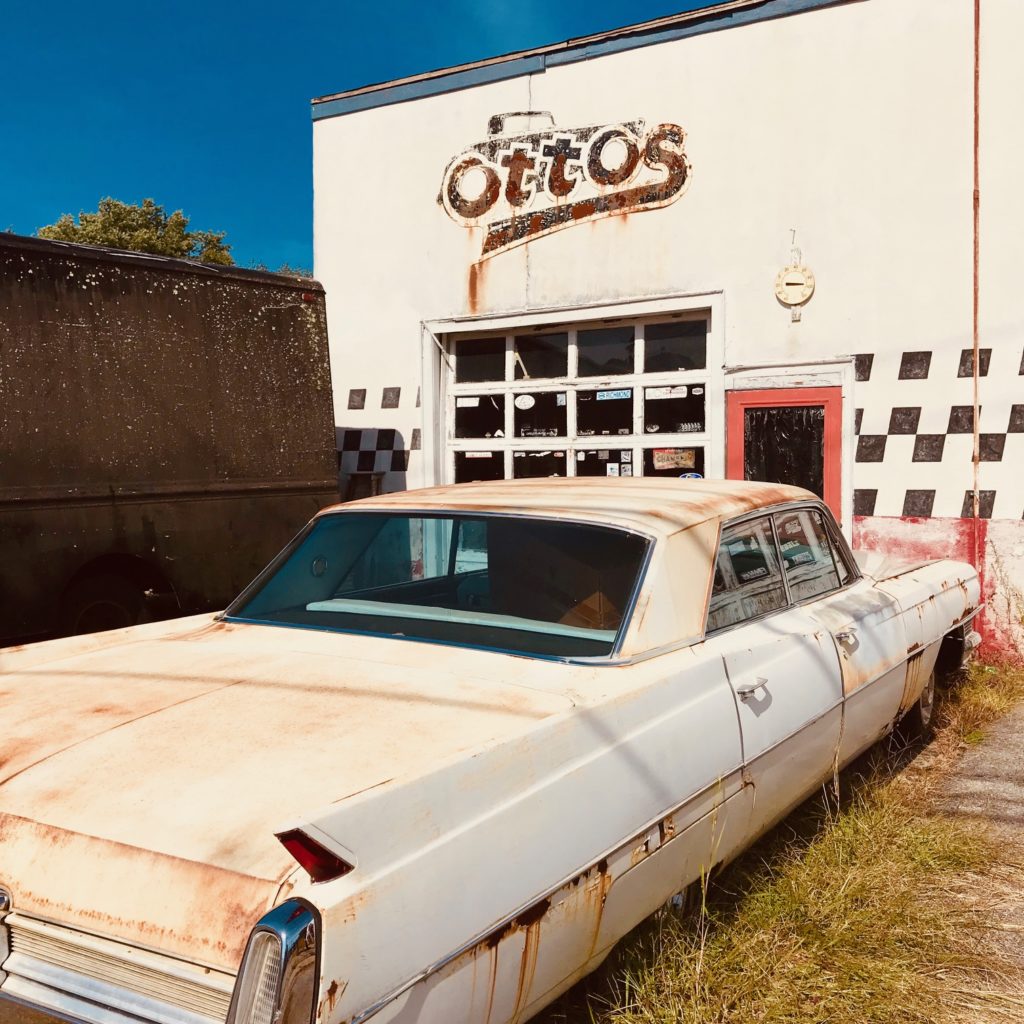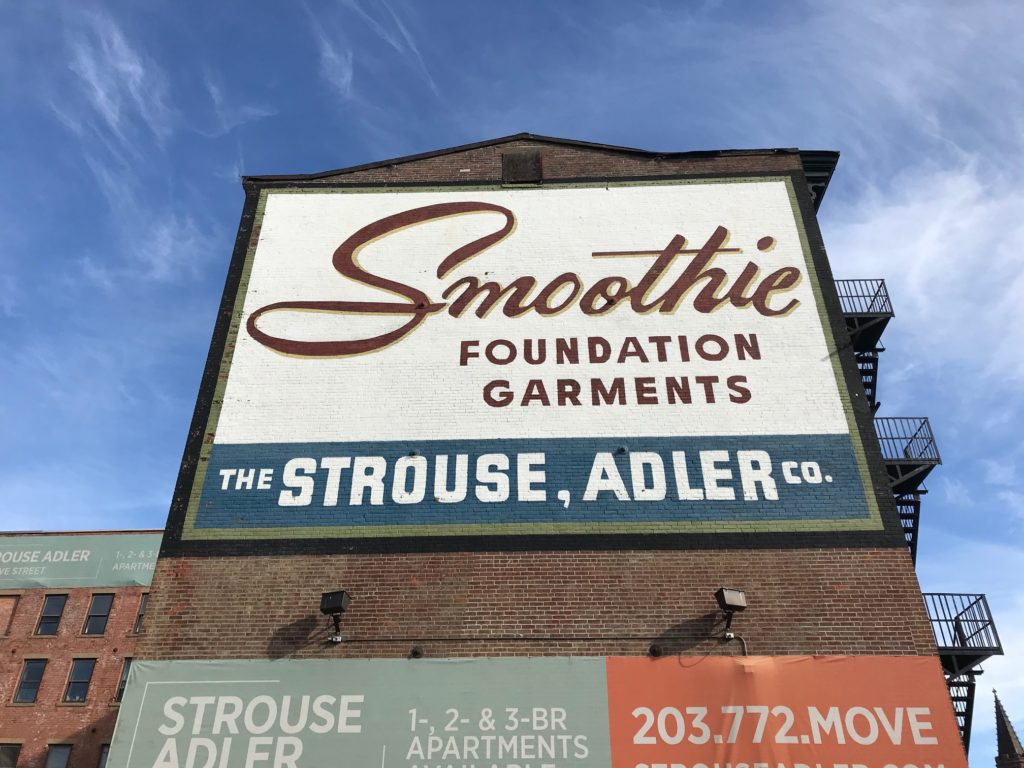By Mary M. Donohue
(c) Connecticut Explored Inc. Spring 2020
Subscribe/Buy the Issue!
Perhaps the most important strategy for an architectural historian is simply to look up. Few busy people really take the time to appreciate the fullness of the built environment. Buildings tell complex and interesting stories from all angles.
Historic signs are part of that story, often conveying the building’s commercial or industrial past. The artistry, craft, and folk-art character of signs, along with the clues they provide us about our commercial and communications history, has prompted local historians and preservationists to take a second look “up.”
In Connecticut, early signs from 1750 to 1850 were hand painted and often advertised taverns. More than 60 tavern signs in the collection of the Connecticut Historical Society convey messages about food, lodging, and entertainment. Hand-painted wooden signboards were placed above the storefront and often featured the proprietor’s last name or the store’s name spelled out in gold letters.
By the third quarter of the 19th century, buildings themselves became “canvases” for advertising. Long-lasting oil-based paint was used to paint bold block letter ads directly on exterior brick walls. Factory owners, wholesale suppliers, manufacturers, cold storage operators, and store-owners had painters known as “wall dogs” hang from scaffolding to paint eye-catching ads. The National Biscuit Company, according to Ronald Ladouceur in the Society for Commercial Archaeology Journal (Fall 2018), may be the first, in 1899, to create a national campaign of wall ads for its “Uneeda Biscuit” product.
The heyday of wall signs was from 1890 to 1950. As these hand painted ads begin to fade, they became known as “ghost signs.” Today social media photographers hunt for ghost signs that still “herald an obsolete product, an outdated trademark or a clue to the history of the building’s occupancy,” notes Waymarking.com.
A brighter take on signage involved glass tubes and a rare gas, a technology invented in 1912 in France. Neon signs transformed American downtowns from the 1920s to the 1960s. The first known American example advertised a Packard car dealership in Los Angeles, according to Michael Crowe in “Neon Signs: Their Origin, Use and Maintenance” (Association for Preservation Technology Bulletin, 1991). Many American downtowns had examples, often produced by a local sign shop. Neon signs can feature up to 100 colors and require precise design and fabrication by an art department, sheet-metal fabricator, and glass-tube benders.
Sign Preservation
Ghost signs can be repainted and neon signs can be repaired. The National Park Service (NPS) encourages the retention and restoration of iconic signs in rehabilitation projects aided by the historic tax credits. The NPS recommends that communities inventory their remaining historic signs and monitor their condition.
Reader Submitted Signs
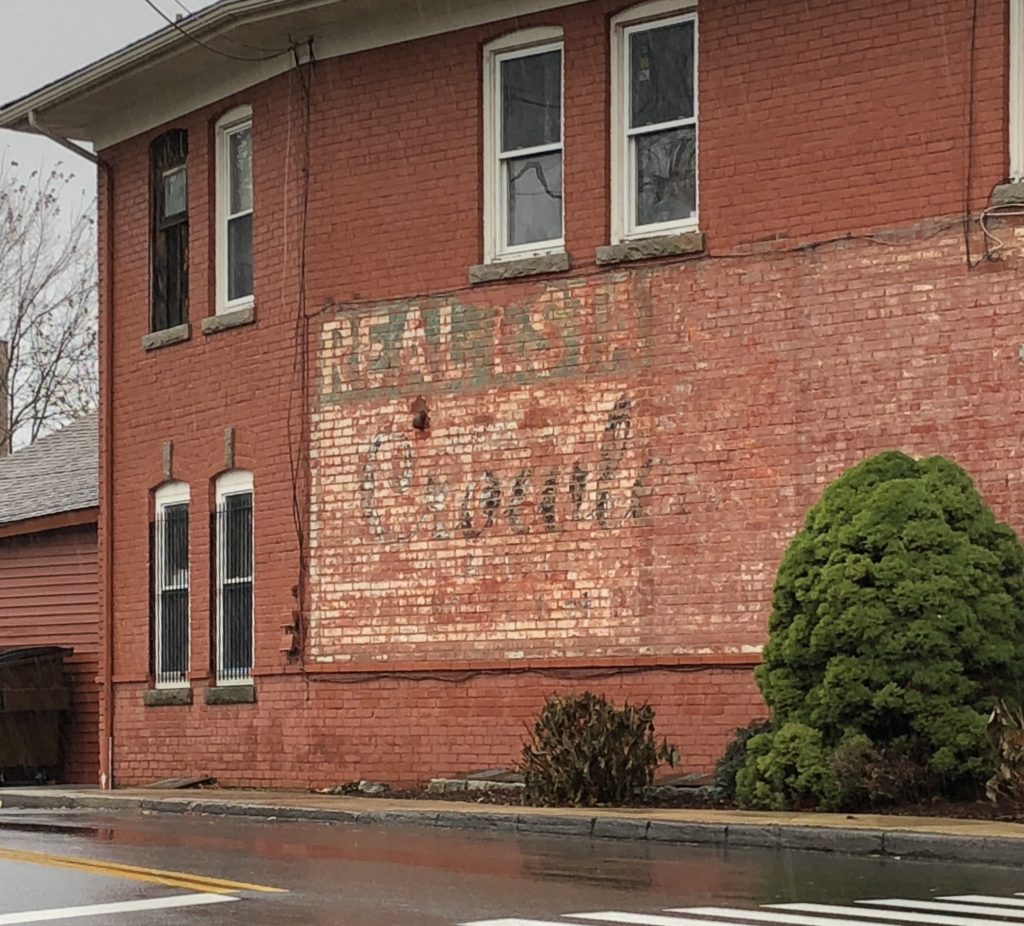 Howdy! We’ve got a ghost sign that is weathering. Hard to read, but it says Crowley Real Estate.
Howdy! We’ve got a ghost sign that is weathering. Hard to read, but it says Crowley Real Estate.
Christine Nelson, AICP
Director, Land Use Department, Town of Old Saybrook
Explore!
See our story about Strouse, Adler: “Connecticut Shapes the Intimate-Apparel Industry,” Winter 2017-2018
“Shack Attack: Classic Roadside Eateries,” Spring 2012
“Lunch Wagon to Space Age Diners,” Spring 2006
“A Hip Road Trip: The History of the Berlin Turnpike,” Winter 2009/2010


